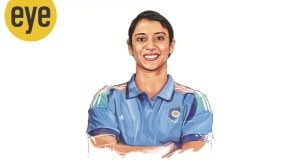Surround SOUND
Artists experiment with the white noise of everyday life in sound art installations
Artists experiment with the white noise of everyday life in sound art installations
Cars honking,machines grinding and hawkers calling out their wares are such banal noises that we often blank them out of our consciousness. But imagine. You are in the sanitised,white-cube space of a gallery and the silence is shattered by the soundtrack of everyday life. You could be startled or you may learn to read a familiar sound in a new way. Thats the impulse that artists experimenting with sound installation art (or SIA as its called) are tapping. Sound,they tell us,has an intimacy that perhaps images do notits like your mother telling you a story.
A handful of young Indian artists working with sound include Shilpa Gupta (36),Tejal Shah (30) and Vijayendra Sekhon (33).
Gupta first explored the idea in her project Singing Microphones in 2008. It was a small beginning. An old-fashioned microphone with speakers,placed in front of an image of the India-Pakistan border,played the speeches of Jawaharlal Nehru and Mahatma Gandhi. Some of us may have heard Pandit Nehru and Gandhijis speech on the eve of Independence but there are so many from the younger generation who may not have and certainly not in the context of art, says Gupta,who is based in Mumbai.
Now it takes on a gargantuan scale with Singing Cloud,her latest sound installation art project that involves 4,000 microphones with 48 speakers assembled in the shape of a massive cloud suspended from the ceiling. It plays an eight-minute audio-piece of whispers running on a loop. The voices seem to be snatches from a dream: I want to fly with you dont push me away we shall all fall down…
Ive been only editing sound for a couple of months. The Singing Cloud is part of a larger project I began working on during my Paris residency. It plugs into the unconscious and the world of dreams, says Gupta,who began her career as a web-based artist. Titled While I sleep,the project explores the universal themes of fear and prejudice. I worked with Mahzarin Banaji,a Harvard professor who wanted to explore the power of what lies in our dreams, says Gupta,who is planning to show the installation at the 2011 India Art Summit.
Sekhon finds his raw material on the streets of bustling Mumbai. With a special mike and a recording sound box,the painter and multimedia artist walks the city collecting ordinary sounds like the sawing of metal,the traffic snarl at streetlights and local street-singers performing. The project is part of the first World Listening Day. Sekhon joins a large community of artists online who will celebrate the birthday of Raymond Murray Schafer,a Canadian composer,writer,musicologist and environmentalist who spearheaded the World Soundscape Project. We hope to have events like sound walks and share soundscapes online to mark his birthday on July 18. It will be the first online coming together of artists who believe in an acoustic ecology,a world of sound that may mean totally different things to us if we close our eyes and listen, he says.
Women artists of an earlier generation had shown the way. Anjana Mehra,Navjot Altaf and Sonia Khurana have produced some deeply evocative pieces that range from Altafs sound piece Junction 1,2,3 (2006) that captures the hustle-bustle of a particular crossing at Kondagaon,Chhattisgarh,to the heart-wrenching screams of women and children falling into a well as in Khuranas soundscape (2000).
Mehras installation plays with the element of surprise. A refrigerator and oven stand in the middle of the gallery among her paintings; shabby domesticity amid the shine of a gallery. Open the refrigerator and you are hit by the grating edge of city noises. Unnerving enough to slam the door shut. The two installations were part of her solo exhibition that showed in Mumbai at the Kitab Mahal in 2008 and in 2010 in Delhi. In metros,we live with so much sound that it has seeped into your homes and weve become indifferent. Viewers got frightened when they opened the fridgeit dawned on them how polluted our soundscape is, says Mehra,who takes a pro-green,anti-city stand in her work. In the oven installation,I overlay the sounds of hawkers and religious chants because today new-age gurus seem to be hawking religion, says Mehra.
The voices of the marginalised are also part of these soundscapes. Hijras and Kothis get airplay in Tejal Shahs installation,which was part of her larger exhibition What are you ( at Gallery Espace,2010). For the soundscape,Shah invites the listener to stand before an ornate full-length mirror and listen to the testimonials of people from the transgender community. They range from self-discovery to the narrative of abuse. By using a sound piece,it underscores the invisibility of the transgender community. By placing a mirror before you,it also urges you to introspect.
You might learn to be a good listener.



- 01
- 02
- 03
- 04
- 05




























